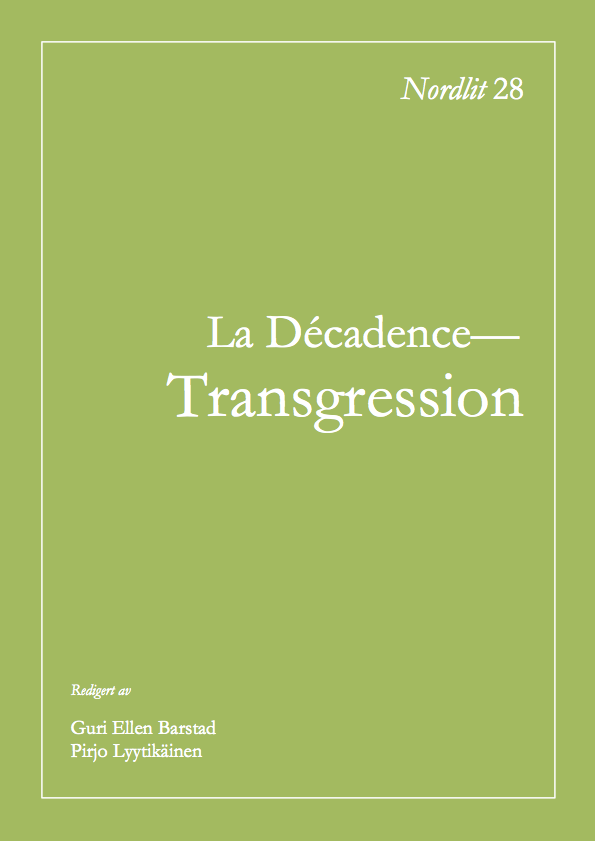From Exquisite to Transgressive Moderns? The Goncourt's "Decadent" Eighteenth-Century Art Revival
DOI:
https://doi.org/10.7557/13.2052Emneord (Nøkkelord):
Eighteenth-century art, decadence, revival, collection, modernité, transgression, décor, artifice, decoration, performanceSammendrag
As avid collectors of French eighteenth-century art, the Goncourts' contribution to its nineteenth-century history is well-known. This article, however, explores a less welldocumented aspect of their L'Art du dix-huitième siècle (1858-1875): that is, its articulation of an art of latency and decadence prior to the term's fin-de-siècle association with explicitly transgressive cultures of modernity. Indeed, the paper argues that the Goncourts were amongst the first writers of their age to use the art of an age linked with political and cultural decay, to foreground latently decadent tendencies in mid nineteenth-century French art and culture. In so doing, they were to produce a paradigm of "decadence" defining not decline, but a new and highly modern artistry of heightened aesthetic expression. The article will explore these ideas in two principal ways. First, it considers neglected relations between the Goncourts' and Taine's ideas on art, and specifically, the Goncourts' use and exploitation of Tainean indicators of decadence, broached in Taine's study on La Fontaine (1861), for opposing artistically and culturally productive ends. Second it develops these ideas in a discussion of the three artist-studies in L'Art du dixhuitième siècle in which the Goncourts' developing theme of "decadence" is articulated with especial force and prescience: in "Boucher" (1861), "Greuze" (1863) and ‘Fragonard' (1864). These, as the paper argues, suggest particularly defined channels for the Goncourts' engagement with key Tainean ideas of the period, offering related opportunities for their promotion of corruption, vice and decline as aesthetically and culturally compelling. In repositioning Boucher's sensualism as "indécence", Greuze's "innocence" as "perverse" and Fragonard's Italianate expressivity as "impure", the Goncourts not only situate their "histories" in the vanguard of a new, transgressive aesthetic understanding of eighteenth-century art, they re-appropriate its Romantically exquisite aspects as emblems of an art of exquisite corruption and as triggers for recreation.Nedlastinger
Publisert
2012-03-26
Hvordan referere
Simpson, Juliet. 2012. «From Exquisite to Transgressive Moderns? The Goncourt’s ‘Decadent’ Eighteenth-Century Art Revival». Nordlit, nr. 28 (mars):159-72. https://doi.org/10.7557/13.2052.
Utgave
Seksjon
Artikler









